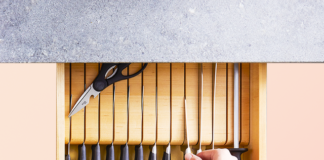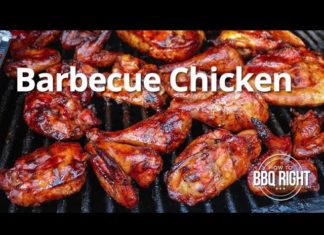
We’ve been making paper from trees from years, so why not sheets as well? A good reason to do this would be because the fibers are stronger than the fibers from other plants – specifically cotton. Also, it seems that well-made eucalyptus sheets, which are made from fibers from the eucalyptus tree, generally wear better and last longer.
Like so many of the new and exciting bedding products that have made an appearance in recent years, sheets made from eucalyptus are a result of manufacturers going green, or wanting to go green.
But what makes one textile better for bedding than any other?
Textiles for Bedding
There are many different textiles on the market, many of which are used to make different types of bedding for our sleep needs. Some are eco-friendly, other not so. But they all jostle for attention on shop shelves. If you are looking for bedding, you will find that products are made from:
- natural fibers, like cotton,
- biobased fibers that are derived from plants and then processed using natural organisms and enzymes; these are truly biodegradable fibers,
- organically produced fibers, which are natural fibers that meet the US National Organic Program (NOP)Standards, or similar,
- plant-based fibers which are grown specifically for use in the textile industry, cotton, flax and hemp being good examples (all three of which are also natural fibers),
- synthetic fibers used to make polyesters and polyvinyl fibers like nylon and spandex; these are synthesized from petroleum and carbon derivatives and not from renewable resources,
- manmade or “regenerated” fibers that use natural ingredients that are altered by man in the manufacturing (which is usually chemical) process; these include textiles that are made from cellulose to create rayon, viscose and modal for example.
The fibers from trees – including the eucalyptus – are regenerated to form cellulose which is what is used to make both paper and textiles (although the processes are not the same).
Fibers from Eucalyptus
The eucalyptus tree has very small fibers, in fact probably the shortest fibers of any hardwood, and as short as 0.65 mm or 0.025 inches (just a fraction of an inch!). Softwood fibers, like pine, on the other hand are as long as 2 mm or 0.078 inches long. The fibers are also very fine and they are able to resist collapse, meaning they don’t flatten out. This is a great advantage for textiles because they are soft and they also bulk out nicely.
Fabrics Made from Eucalyptus
Perhaps surprisingly, the first eucalyptus fabric was produced more than a decade ago by an Austrian company, Lenzing. Established as one of the world leaders of textiles, Lenzing has set global standards for man-made cellulose fibers, including classic viscose, modal and Tencel (which is made using the eco-friendly “closed-loop” system that enables manufacturers to reuse solvents).
In 2009, an innovative US fabric manufacturer, Valley Forge Fabrics, joined forces with Lenzing in an endeavor to make eucalyptus sheets in America. The first experiments didn’t go well, but then they created a variant of Tencel which worked. Today Lenzing Fibers Inc. is the only company in North America making this type of fiber.
One of the first advantages of bed sheets made from eucalyptus trees that the folks at Valley Forge identified was that because of the natural antibacterial and antimicrobial properties of the eucalyptus, dust mites were minimized (according to a formal test undertaken by the American Society for Testing and Materials). But they soon discovered that with a few initial washes, they also became incredibly soft and absorbent. They have also found that they last. As a result the company caters specifically to the hospitality market where sheets have to be washed over and over and over again, as guests change.
Although fibers from eucalyptus, like bamboo’s viscose rayon, are cellulosic, the Federal Trade Commission (FTC) classifies the fiber from eucalyptus as “Lyocell”. The reason for any type of differentiation is largely because a variety of toxic chemicals are used to make viscose rayon from bamboo, whereas only one solvent is used for Lyocell, and it is not toxic. In fact the process used for Lyocell allows the solvent to be recycled and reused.
Today Valley Forge Fabrics have also chosen to manufacture a blend of cotton or polyester that is mixed with their Lyocell, their eucalyptus fiber.
Generally Lyocell – or eucalyptus – sheets are more expensive than other types, but they are easy to wash and they don’t wrinkle unpleasantly.
What People say about Sheets Made from Eucalyptus
Many people who opt for sheets made from Lyocell or other forms of eucalyptus do so because they are different (because they want to know what they are like). Many who go back for more, do so because they find that they love sleeping on, or between them.
We searched a selection of review sites on the Internet to see what people had to say – both good and bad. Here are ten of the best/worst comments:
- “These are the best sheets I have ever slept on.”
- “They are cool and wonderful.”
- “Not a good green product.”
- “I really like the softness of them.”
- “They are extremely soft and so comfortable to sleep in.”
- “They breathe well but still feel durable and strong.”
- “I do NOT recommend these sheets at all.”
- “I love this sheet set!! I have had them for a year now, and they are still perfect, though all the washing and drying. Super soft!”
- “Don’t waste your money.”
- “Just went out yesterday to buy a second set and love them.”
Like everything in life, some people like sheets made from eucalyptus fibers and some don’t. Additionally, some eucalyptus sheets are made to a higher quality than others. If you are going to try them for the first time, buy from a reputable manufacturer and choose the best quality you can afford. Then review your sheets so that other people get a good idea of what to expect.







































